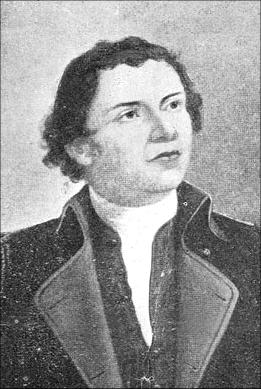Major-General Peregrine Thomas Hopson
 Appointed Colonel of the Regiment on 6th June 1748.
Appointed Colonel of the Regiment on 6th June 1748.
Commissioned into the 3rd Foot Guards on the 25th April 1712 as Ensign. Promoted to Captain in J. Clayton’s Regiment (14th Foot) on the 3rd April 1718, by 1738 he was a major in the same regiment (14th Foot). He was promoted Lieutenant-Colonel in Chomondely’s Regiment (48th Foot) in January 1740/41. He went to Gibraltar during the siege of 1727 and, except for a brief stay in England from 1741 to 1743, was with regiments stationed there until 1745.
On the 1st April 1743 transferred from Lieut.-Colonel of Lord H. Beauclerk’s Regiment (48th Foot), to that of Francis Fuller’s (29th Foot).
In the spring of 1746 Hopson arrived at Louisbourg, Cape Breton Island, Nova Scotia from Gibraltar, as senior officer in Fuller’s regiment (29th Foot), which had been sent there to reinforce the British garrison. Louisbourg had been captured from the French the previous year by a joint New England and British force under William Pepperrell and Peter Warren. Hopson took command of the colony in September 1747 as Lieutenant Governor, succeeding Governor Charles Knowles, and later became governor. By 1747 the British position at Louisbourg was a caretaking role, punctuated by minor French and Indian raids on the outlying areas and the threat they posed on fuel supply of the colony.
In March 1748 Hopson was made Governor of Cape Breton, and the 6th June that year succeeded to the Colonelcy of the 29th Foot Regiment. In October 1748 the treaty of Aix-la-Chapelle returned Louisbourg and Cape Breton Island back to France. Late in June 1749 Hopson and the French commissary, Charles Des Herbiers de La Ralière, began negotiations for the restoration of Louisbourg to the French, and concluded the transfer by the end of July that year. Hopson took the British troops and supplies to the new British settlement at Halifax (Chebucto) and then returned to England.
On the 4th March 1752, he was appointed Governor and Commander of the British Forces in Nova Scotia.
In the autumn of 1753 Hopson was suffering from severe eye trouble and was forced to hand over the government of Nova Scotia to Lieutenant-Colonel Charles Lawrence. Hopson left for England on the 1st November 1753. On the 4th March 1754 he was transferred to the 40th Foot, and eventually resigned the governorship of Nova Scotia in 1755. He was promoted to Major-General on the 15th February 1757, and in July that year he arrived back in Halifax, Nova Scotia with reinforcements for the army commanded by General John Campbell (4th Earl of Loudoun), who was leading an expedition against the French at Louisbourg that summer. Hopson then served as an adviser, and agreed with Campbell’s decision to abandon the expedition, due to both the late arrival of the troop reinforcements and the strength of the French fleet at Louisbourg. In August 1757, John Campbell returned to New York, leaving Hopson in command of the British troops in Nova Scotia and having designated him to lead a new expedition against Louisbourg the following year (1758). However, Hopson was recalled to England due to poor health.
On the 10th November 1758 sailed in command of an Expedition against Martinico and Guadaloupe (French sugar islands). Hopson by now was seriously ill and died at Basse-Terre, Guadeloupe on the 27th February 1759.
